Interview: Dominique Perret, Co-Founder of WEMountain, “We needed to completely rethink the box”
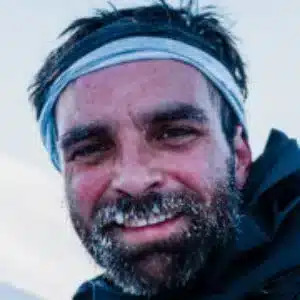
Mathieu Ros Medina is passionate about mountain, ski and snowbard. He has more than 15 years of experience as journalist in the field.
Dominique Perret is a freeride legend who helped pioneer the sport in the early ’80s, using film to shift freeride skiing into high gear. Perret is also famous for taking fast and furious to incredible heights, setting a world record for cliff jumping in 1990, and clocking in at more than 210 km/h (about 131 mph) on the Portillo speed-skiing track in 1991. In 2000, he was named Best Freeride Skier of the Century at the Board Awards in Paris. The Swiss Jura native was practically born with skis strapped to his feet. With over 28 films under his belt anda long and fruitful career that took him to some of the most beautiful slopes on the planet (including Everest’s North Face), he wanted to give a little something back. He founded WEMountain and dedicated himself to mountain safety. In this interview, he gives us the inside scoop on his passion for snow and speed, WEMountain, and how it all began.
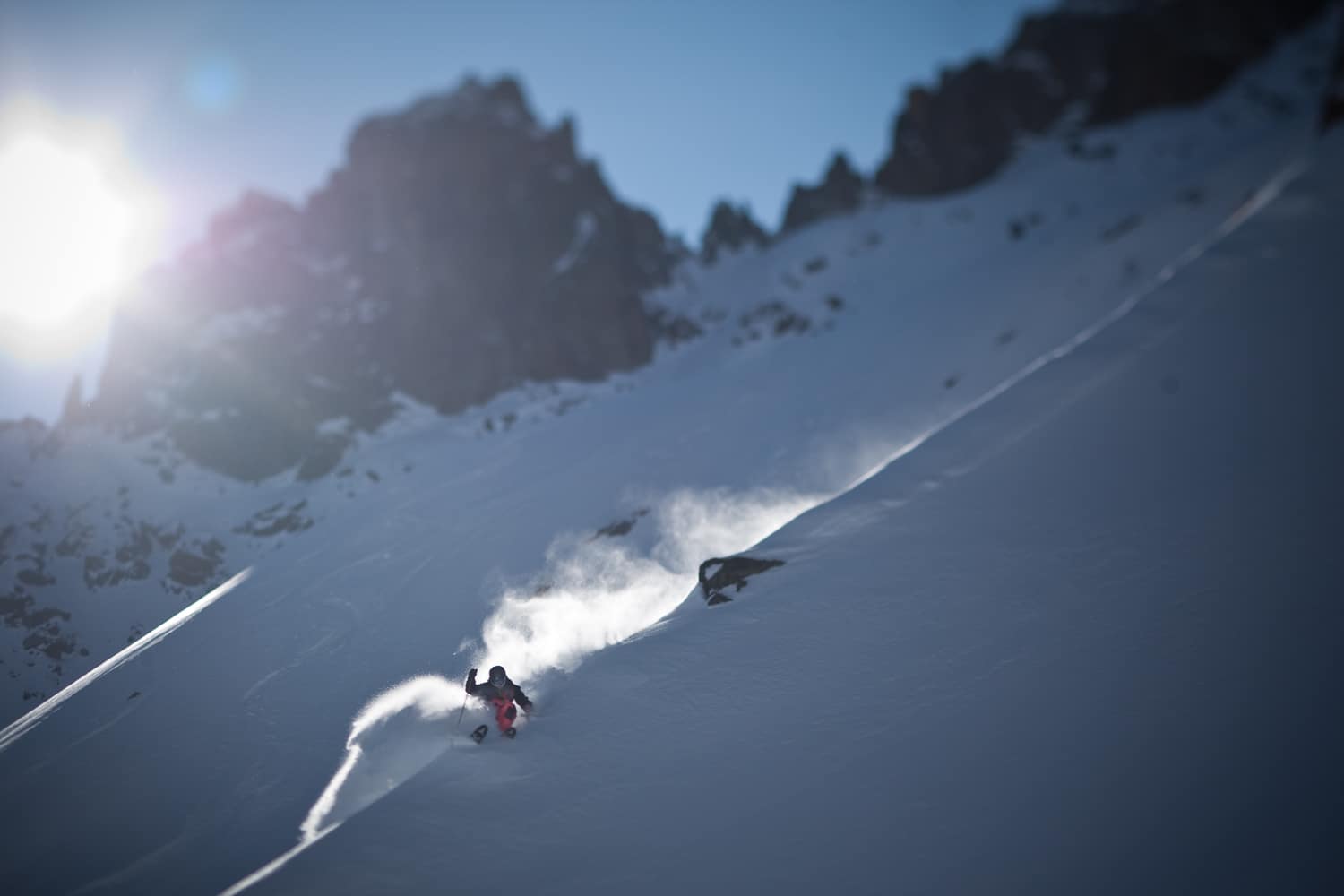
Mathieu Ros (MR): Dominique, tell us a bit about your story, your skiing adventures, and how they led you here today.
Dom: I was born in 1962 into a family of skiers. My father was a contemporary of Jean Vuarnet and a Swiss Olympic champion in his own right. We lived not 500 metres from a little ski lift that stayed open at night. When we were kids, if we worked hard at school, we were allowed to go skiing with our friends. To make it back home, we had to fly down the slopes and ski through a forest, and I think that’s where I developed a taste for freeriding.
I often talk about the way snow smells. From slush to crust, all of it has a scent. Ever since I was a kid, I’ve loved the smell. The Jura was a great risk-free place to learn how to ski. The environment is extremely hospitable, the mountains are small and the snow is forgiving. I’d never have been allowed to go out on my own if I’d grown up in the Alps! It really was a friendly introduction to snow and nature in general.
I was in a ski club and learned all the classic skiing techniques, including slalom and giant slalom. But I didn’t like competing. I loved the forest and I just wanted to ski. Still, I made sure to practise my technique. Like a music virtuoso, endlessly repeating scales, only for skiing. Once you’ve mastered the techniques, you can tackle any slope on any mountain. It was the same for Didier Cuche, George Schneider, and other ski greats who come from the same region.
“If it hadn’t been for skiing, I don’t think I would have gone this far in my studies.”
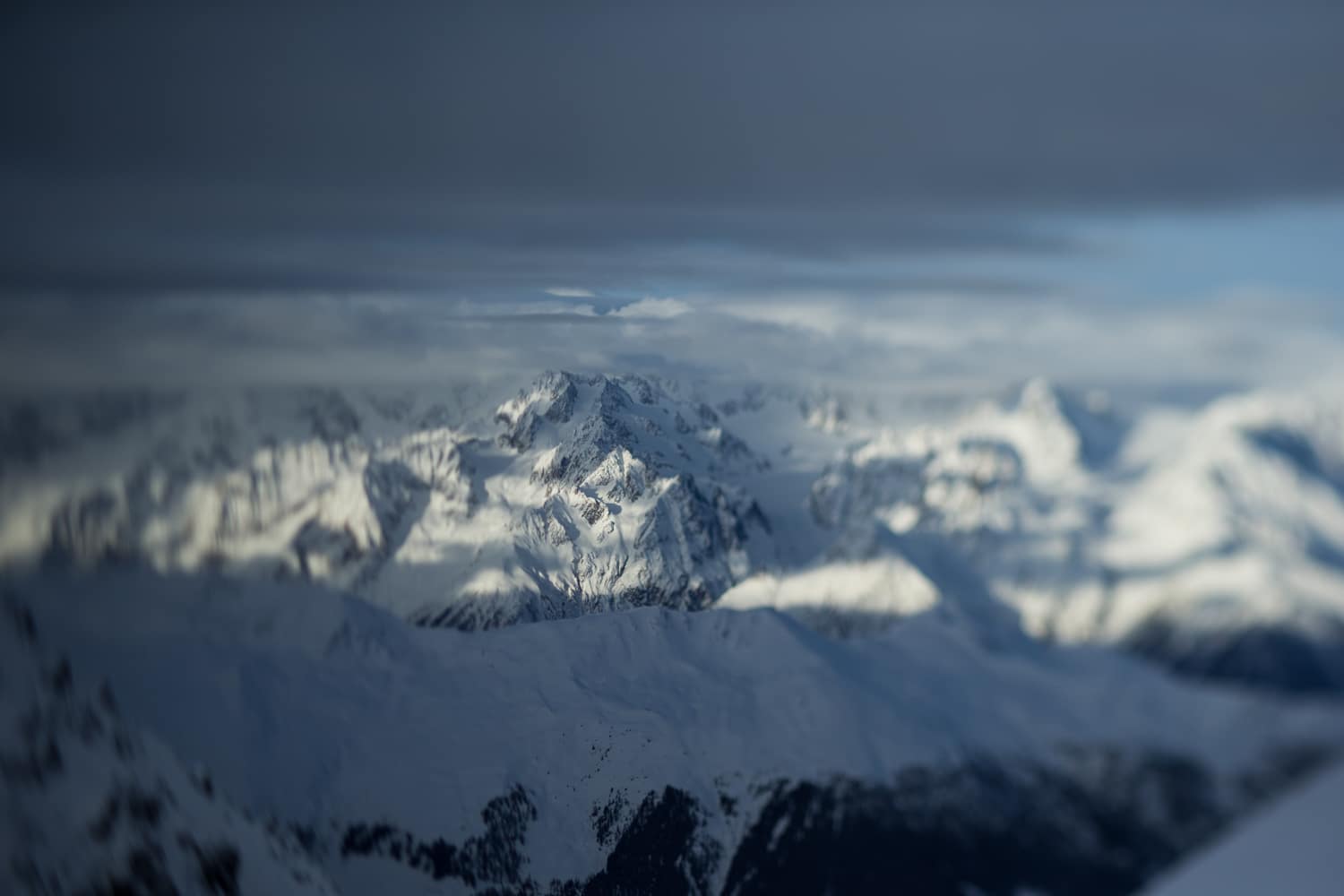
MR: Professional skiing was nearly unheard of when you started out. How did you end up a pro skier?I’m thinking back to Soul Pilot, which you filmed in Alaska in 1998 or 1999. You also pioneered new ways of skiing.
Dom : People laughed when I mentioned wanting to become a freerider as a kid. But I just knew I had it in me. I even went into mechanical engineering so I could learn how to design better skis, to understand the materials. If it hadn’t been for skiing, I don’t think I would have gone this far in my studies.
À la fin de mes études j’ai fait un peu de ski de vitesse, parce que je trouvais ça drôle, et j’ai rencontré Didier Laffont à Chamonix. C’était la période où Edlinger faisait ses premiers films de grimpe à mains nues, et le début des Nuits de la Glisse, tu voyais du ski, de la grimpe, du surf, c’était génial, je pense que ça a été le pivot des sports freeride. Car tout d’un coup les gens ont compris que ces sports libres pouvaient être filmés, étaient sexy en termes d’images, et il y a eu de la grande diffusion.
In the winter of 1985, I made headlines setting a new cliff ski jumping world record in Champéry: 34.6 metres (about 114 feet)! It’s what had brought me to Chamonix. Everyone was saying it was the place to be. Monoskiers and the first snowboarders were already capturing their exploits on film.
I knew that was where my life was heading. I didn’t wait to be hired. I set up my own production company, and I went to meet with the top ski brands. I understood early on that whatever you did—skiing, tennis, Formula 1—what the sponsors were looking for was visibility. It didn’t exist at the time in freeriding, so I told them straight out, “This is what I’m going to do. Want to come along for the ride?” I wasn’t going to wait for them to get the ball rolling. I always knew I had to make the first move, make my own films, and get the ball rolling myself.
I gave the sponsors their visibility, and instead of just selling my films to three or four TV channels, I gave them to big distributors who could reach audiences through upwards of 400 channels in 100 countries. That kept my partners coming back for more. And I made a movie every year for the next 28 years. The last one, Home Swiss Home, came out in 2012, when I was 50.I got such a buzz out of going where no one else had gone before. I believe that’s what freeriding is all about. Getting to make tracks in Tajikistan, Uzbekistan, Alaska, Norway, and discovering places where very few people had skied before. I saw the whole world on my skis.
“I made my last film when I was 50, after 28 years.”
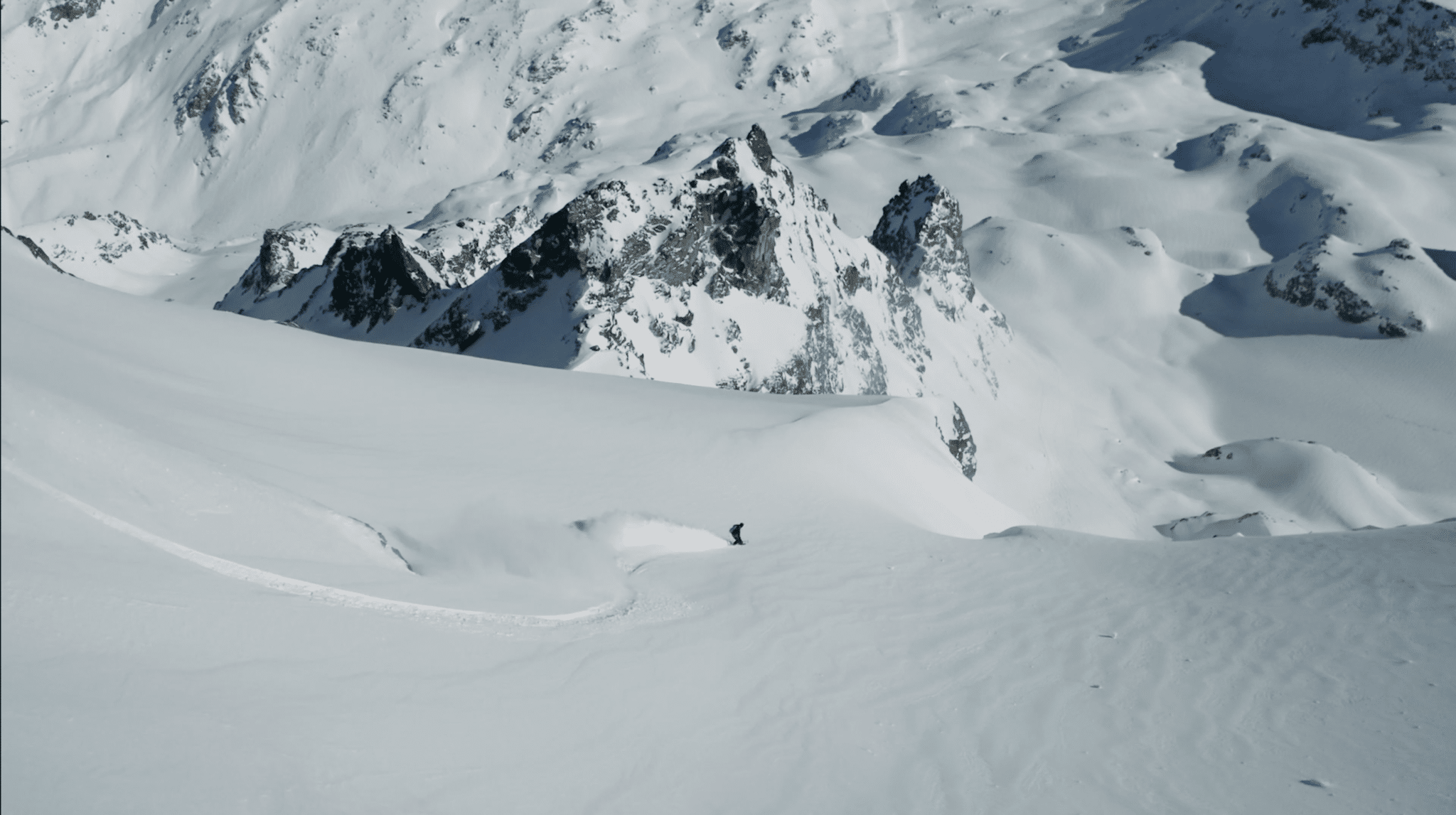
MR: You’ve dropped 30-metre cliffs and claim you’ve “made peace with death.” How did you come to build your own method of risk analysis?
Dom: I’m a mechanical engineer by training. Learning ways to analyze risk in industries comes with the territory. That’s my starting point: how do I feel, what’s the terrain, the environment, what are the risk factors, where am I getting my information from? These are all core risks in industry. I just adapted them to skiing. It’s what has oriented my entire career, with a few refinements along the way.
When you’re an athlete, your speed, strength, skill, and mindset are key. For years, I’ve made these principles work for me. They gave me focus, a system I could apply wherever I went, whatever the situation. I knew what worked well for me, but when it came time to teaching others, I needed specialists to validate it. That meant doctors and snow scientists, like Bolognesi. They were a great sounding board.
Like, I always carried a backpack, but back in the ’90s, we didn’t have probes and shovels, or transceivers! Out on the slopes, you really only had yourself to count on. So I developed a system in which you had to be completely self-reliant.Today, of course, I pack an airbag, but I started off in a completely different direction.
“I realized I had lost 30 friends in as many years.”
MR: What led you to want to share your personal experiences?
Dom: The day I stopped making videos, I thought, “Okay, I’ve lived my passion, I’ve achieved everything I ever imagined doing and more.” It was time to give back some of what I learned and came to realize over the years. Then when I took stock of my career, I realized I had lost 30 friends in as many years—a record worthy of fifties-era Formula 1 drivers. I also saw how little training was available—hardly anything. Basically, there were just avalanche transceivers and customer support from the companies that sold the equipment. And a bunch of outdated techniques dating back to the ’70s, such as GRM, that left me wanting.
I love this sport with a passion, but every time there’s an accident, we look like a bunch of idiots. All I hear is, “They have no idea what they’re doing, we have to stop people from doing this!” So I set out to create a program that would increase awareness and responsibility, and make the sport safer. Every other high-risk sport has introduced tiered training programs over the years. There are excellent programs for diving, paragliding, and skydiving. So why couldn’t we do the same with skiing?
“Over 3,000 members signed up in a year and a half. I call that a win!”
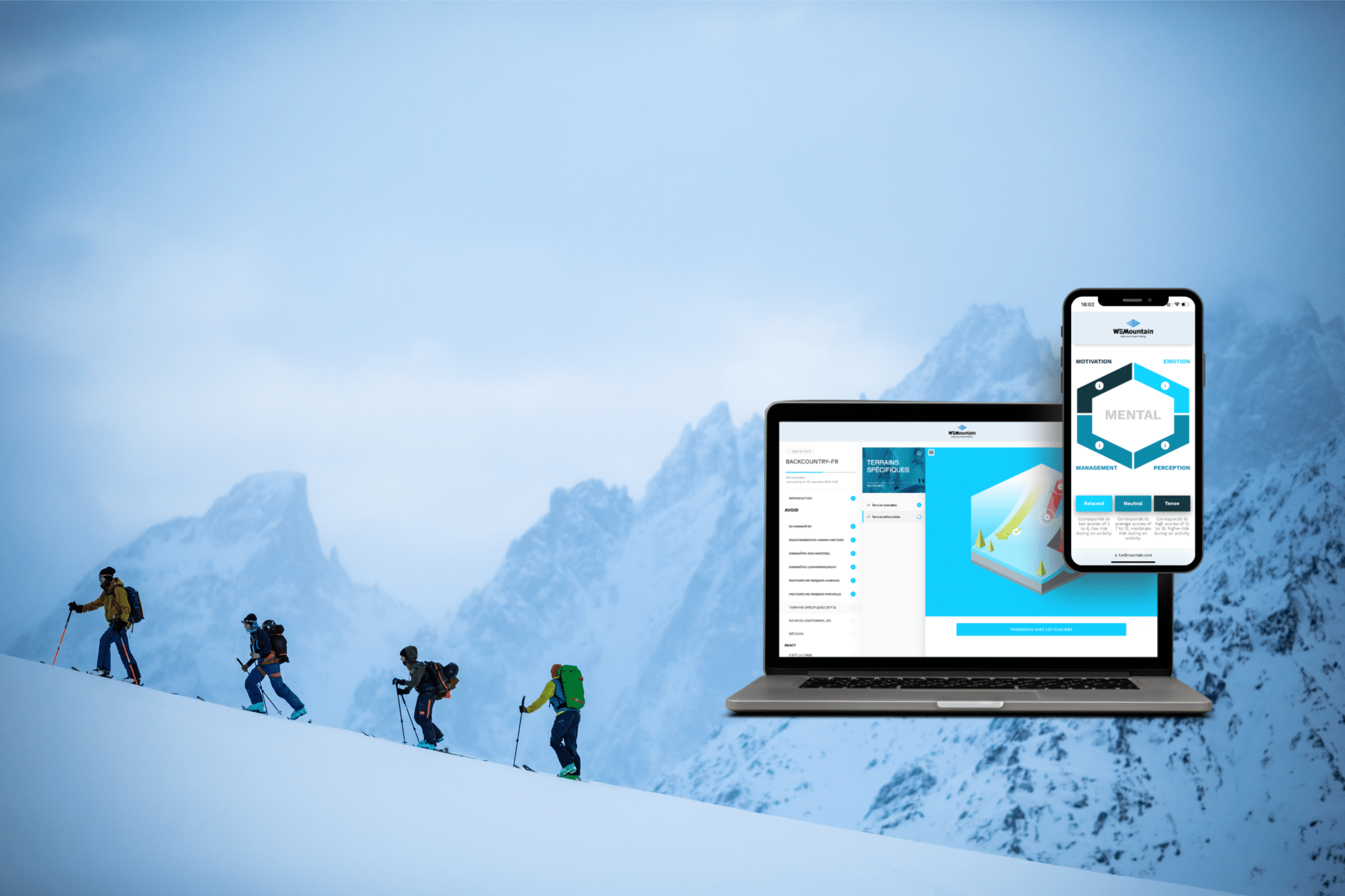
MR: Is that the reason behind ISTA (International Snow Training Academy)?
Dom: Exactly. Accidents were on the rise. That’s what really scared me. I thought the only way to guarantee our freedom was through education. But I never thought we’d encounter so much resistance! We gave in-person courses at first, with guides and ski instructors. They were the ones teaching the program, but you’d never believe how much grief they gave me. They completely sabotaged ISTA’s first iteration. Then, along came COVID. We’d invested a ton of money into the business model, but COVID made it unsustainable. So I decided to rethink our approach. We went digital
And presto, no need for an in-person ski school! We reached practitioners directly, gave the classes online, and once students had their digital certificate, we sent them to a professional. It was a real game changer. Suddenly, people could learn on their phone or computer. Things just took off from there. Before, you always had to find the right time slot, create a group, find a guide—it was a hassle. Digital technology lets you just jump right in, and that motivates you to keep going. Over 3,000 members from 52 different countries signed up in a year and a half. I call that a win!
MR: Your vision of mountain safety has evolved over the years. One important shift was a return to putting the practitioner first, making the sport more rider-centric.
Dom: The most alarming statistic is that 90% of avalanches are triggered either by the victim or by a member of their group. That means 90% are due to bad decisions. We simply can’t ignore the human factors behind avalanches. When it’s humans versus the environment, it’s fifty-fifty either way. Before, mountains were in the hands of mountain professionals. Guides and instructors had few people skills. You couldn’t talk to them about emotions, and all the human factors were basically ignored. That’s why it was very important for me to work with doctors, psychologists, and sleep and hydration specialists. Robert Bolognesi (see interview) does accident analysis, and we realized that, most of the time, they’re triggered by a series of little missteps, not a single giant mistake. Someone didn’t get enough sleep. They’re suffering from a bit of jet lag. They didn’t get enough to eat or didn’t drink enough that morning. Or they’re always hanging back from the rest of the group. Our job is to try to find ways to foolproof the process as much as possible so bad decisions don’t get made.
The tools available today are incredible. We measure everything on the mountain: the slopes, the temperature, it’s all measured down to the last snowflake. The only thing we can’t measure is you. So we developed a tool we called the Mountaineering Human Factor, or MHF. It’s a self-assessment tool where you answer a series of questions that help you evaluate your state of mind, whether you’re relaxed, neutral, or tense. It’s not just gut feelings we’re talking about. You’re taking a long, hard look in the mirror. It’s a really effective means of keeping the human factors in check along with the natural ones.
“I love speed. But there’s no margin for error when you’re bombing down a slope.”
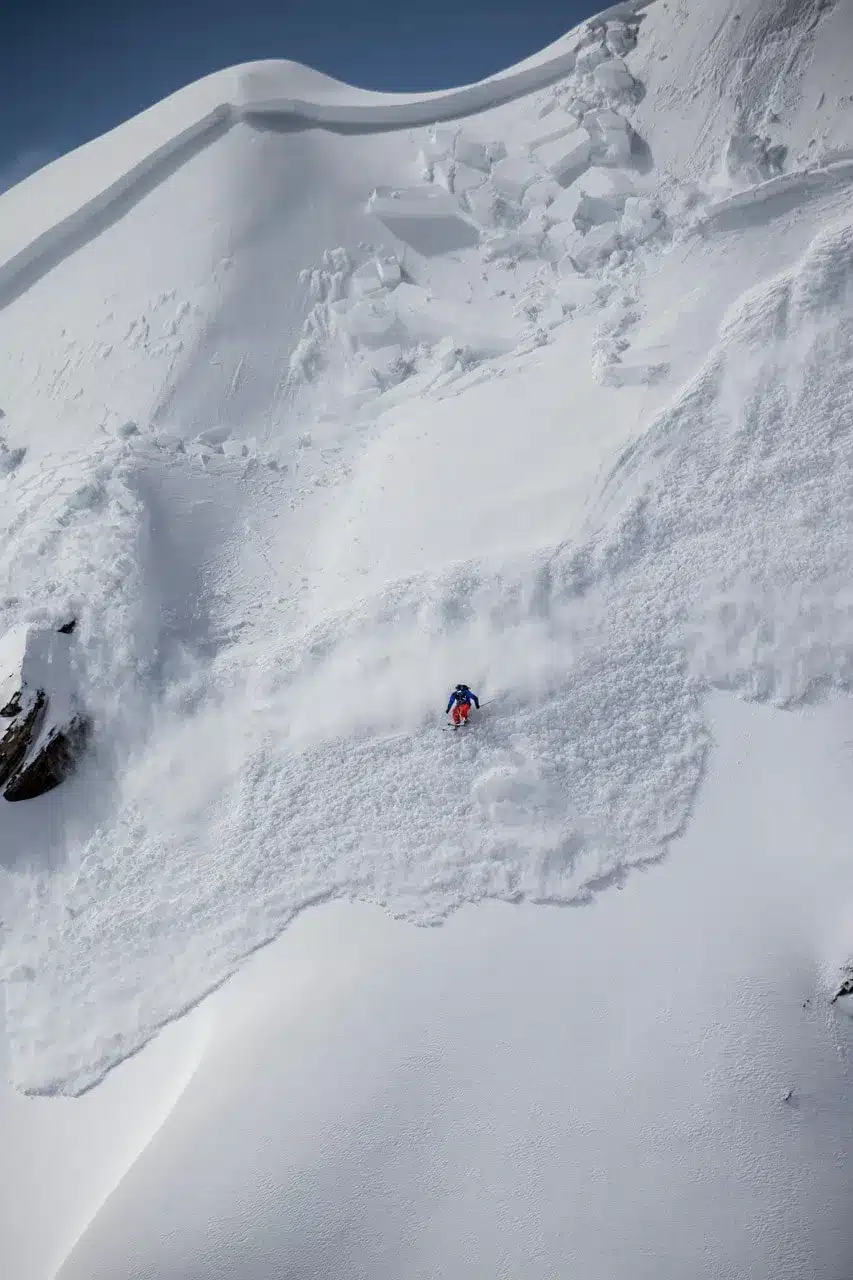
MR: Your email signature is “Speed is your friend.” That’s kind of unusual, coming from a Swiss native, but does it also hold true in the mountains?
Dom: I love speed. But there’s no margin for error when you’re bombing down a slope. When you go at high speeds, you strip down to the essentials. You let go of everything you don’t absolutely need. It’s the same in business. You always follow the fall line. I love the simplicity of that, the pureness of the speed you gain. It’s like in the 100-metre dash: it’s all about precision, you have to channel every twitch of a muscle into your speed.
“The avalanche bulletin is a net meant to catch whales, not shrimp. We skiers, we’re shrimp.”
MR: WEMountain is also a story about friendship. How do you view this collective you’ve gathered around the concept of mountain safety?
Dom: In WEMountain, there’s the word “WE”, as in “community.” In my 30 years of riding, I’ve met people from all over in the snow, and I gathered over 40 experts for this project. My goal was to try to sift through and combine best practices from around the world. Not to say that any one method—Swiss, or Italian, or French—is any better than another. We’re really all singing the same tune. Canadians, for example, are the best at snow and risk, with “InfoEx,” their avalanche information-sharing initiative developed in the heliskiing resorts.
I’m really looking to blend the various best practices into a single, harmonized system. So when you log in to WEMountain, whether it’s from Paris, London, Norway, New York, or Japan, you know what you’re going to learn is universal. That’s what’s important: bringing this community together around a single, global table.
In Switzerland, you learn about avalanche bulletins and the graphical reduction method. That looks great on paper, but it doesn’t work well in reality. For example, you don’t get avalanche bulletins in Norway. So that means you learned a method that only works in your home country. I want to go beyond that, think in more global terms.
I especially want tools for skiers that are developed by skiers. Because avalanche bulletins are meant for communities, villages, roads, trains, etc. We just lumped skiers into the mix as an afterthought. The avalanche bulletin is a net meant to catch whales, not shrimp. We skiers, we’re shrimp.
And we’re skiing at a level that has nothing to do with skiing in the ’70s and ’80s. We need to get a fresh, innovative take on the sport.

